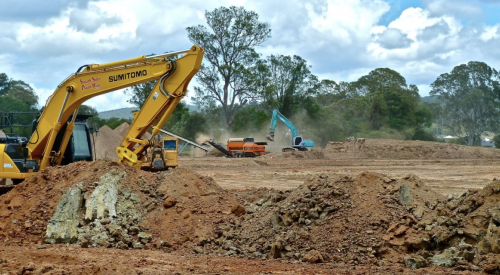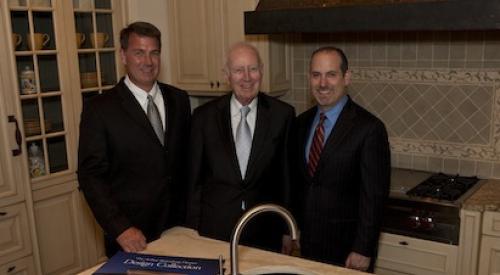| Beazer Homes' The Crossing at McKinley Mill in Raleigh, N.C.
|
The greater Raleigh-Durham and Chapel Hill, N.C., area has several attributes that builders like to see.
It has a strong, high-wage jobs outlook over the long term thanks to a large business/technology sector linked to three renowned universities that have given the area the name Research Triangle. Its warm climate is an additional draw during times when new jobs are being created.
And most important, it has a large supply of buildable land with few natural barriers to growth.
That's why Giant builders such as Centex, Pulte, M/I Schottenstein Homes, Beazer Homes USA, K. Hovnanian Enterprises and John Weiland Homes and Neighborhoods have come to the area in recent years.
Lately, however, there are signs that level growth and flat home prices will put pressure on margins as lot prices continue to rise.
The land-value measure of GMP/lot indicates that land prices will rise in coming years. According to Rosen Consulting Group estimates, GMP/lot hit $141,259 in 2002, will stay level at $141,317 in 2003 and will rise sharply to $144,746 and $149,175 in 2004 and 2005.
Consultant Bernard L. Helm of Market Opportunity Research Enterprises in Rocky Mount, N.C., says one likely initial response will be slightly reduced lot sizes across much of the six-county area.
|
|||||||||||||||||||||||||||||||||||||||
Lot sizes for $160,000 homes in Johnston County, southeast of Raleigh, ran at more than 36,000 square feet in 2001. And Helm says average lot size across the entire metro area was 17,820.
Growth during the 1990s and the ability to build on larger lots have dramatically affected the volume of urbanized land in the area. Ten years ago Helm’s firm kept figures for only the three main counties of Durham, Orange and Wake. Today it monitors 3,491 square miles and six counties.
"Over time you see that Wake County lots have gotten smaller, and last year they got larger," says Helm. "In 1986 Wake County accounted for 75% of the sales of new homes in the area. Today it is down to 62.5%, so the marketplace has expanded."
"As lots have become scarcer in Wake County, more moderately priced lots have been developed in the surrounding counties. So we end up with a marketplace that expands in area. But Wake County is now at a point where the average selling price of homes is around $227,000. At that point you are forced into a larger lot."
Entitlement and permit time lines are being held in check in most places, Helm says. But the growth in the number of new homes during the past 10 years has spurred an anti-growth stance in suburban Cary, just west of Raleigh, he says. And Chapel Hill always has taken a slower-growth posture. Approvals there typically take about three years. By far the biggest factor facing builders in the near term is competition.
"They are used to an increasing market, and they grow because they get their natural share of the increasing size of the market," says Helm. "Now they are having to learn how to market, and this is a very competitive area in which to be building. "
"With the majors that are here and the normal land problems - and I am talking about the cost of land - it is just an incredibly competitive market."












